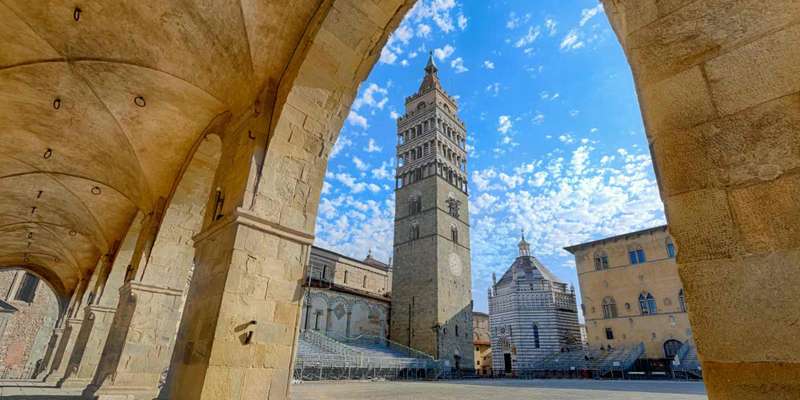- Home
- Useful Tips
- Pistoia for history buffs
Most travelers speeding through Tuscany miss Pistoia's extraordinary medieval heritage, unaware they're bypassing one of Italy's best-preserved historic centers. Recent surveys show 78% of day-trippers spend under two hours here, overwhelmed by cryptic opening hours and untranslated Latin inscriptions. The frustration is palpable - watching groups shuffle past 12th-century facades without grasping the Crusader-era stories etched in their stones. Unlike Florence's crowded monuments, Pistoia offers intimate encounters with Renaissance art and Romanesque churches where you can actually hear your footsteps echo. But without local context, the Piazza del Duomo becomes just another pretty square rather than a living timeline of banking empires and religious rivalries. This disconnect leaves history lovers feeling they've glimpsed greatness but failed to grasp it.


Decoding Pistoia's layered past without a history degree
The beauty of Pistoia's historic center lies in its continuity - where Roman walls support medieval towers and Renaissance loggias. Start at the Cathedral of San Zeno, where the striped marble facade hides a silver altar that survived the 13th-century fire. Notice how the octagonal baptistery mirrors Florence's but predates it by decades. Local historians recommend focusing on three eras: the Lombard rule (visible in the defensive city layout), the medieval banking boom (seen in the Hospital of the Ceppo's ceramic frieze), and the Renaissance artistic rivalry with Florence (evident in the pulpits of San Giovanni Fuorcivitas). Free municipal maps from the tourist office color-code these periods, helping you spot architectural transitions as you walk.
Timing your visit to beat crowds and closures
Pistoia's compact size means midday tour groups can overwhelm key sites like the Ospedale del Ceppo courtyard. Arrive by 9am when the light perfectly illuminates the cathedral's Byzantine-style mosaics, or visit during the Wednesday/Saturday market when locals distract crowds. Many don't realize the underground Roman road (under Palazzo dei Vescovi) only opens at 3pm - perfect for avoiding the lunchtime rush at the cathedral. From June to September, evening visits reward you with cooler temperatures and illuminated monuments. The tourist office's free 'Pistoia Sotterranea' brochure reveals which sites offer extended summer hours, including the rarely-empty Chapel of San Jacopo.
Where to stay for immersive historical ambiance
Sleeping within the ancient walls transforms your experience, letting you wander torchlit alleys after day-trippers leave. The Palazzo 42 B&B occupies a restored 14th-century merchant's home near the Romanesque Sant'Andrea church, with original vaulted ceilings. For budget travelers, Ostello di Pistoia offers simple rooms in a converted medieval monastery with cloister views. Those seeking luxury will appreciate Hotel Patria's position facing the Duomo, where you can watch the sunrise over the bell tower from your window. All three locations put you within steps of the early morning 'passeggiata storica' - when elderly locals stroll past Etruscan-era foundations most tourists never notice.
Unlocking secret stories with local experts
While Pistoia's monuments impress alone, their true drama emerges through guides who can point out where the pistol got its name (from Pistoia's arms workshops) or show you the hidden Templar symbols in San Bartolomeo's frescoes. The 'Pistoia Nascosta' association runs affordable small-group walks revealing underground mills and medieval guild signs. For deeper dives, art historian-led tours decode the political messages in Giovanni Pisano's pulpit sculptures at Sant'Andrea. Evening 'history aperitivo' events at Caffè Duomo let you discuss your discoveries over local wines, often with retired professors joining the conversation. These experiences cost little more than a museum ticket but deliver the 'aha moments' that bring dry dates to life.
